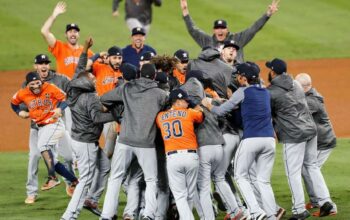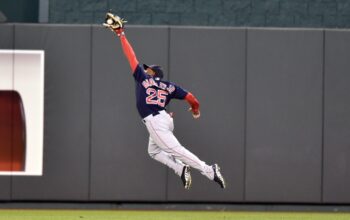INTRODUCTION
With the new MLB Collective Bargaining Agreement (CBA) in place, baseball has hit the ground running again; albeit, with some potential changes on the horizon. As part of the CBA, starting with the 2023 season, MLB will be permitted to implement rule changes with only 45 days’ notice to the MLBPA. One of these potential changes includes the banning of the defensive shift.
You don’t have to look too hard to find plenty of major league hitters in favor of banning, or, at least, restricting the defensive shift. Joey Gallo, Daniel Murphy, and Freddie Freeman have all made headline-worthy comments in the past; frequently bemoaning their scorched line drives that frustratingly wind up harmlessly in an opposing player’s glove. Here’s an interesting quote from Freeman:
“Everyone’s like, ‘Just hit the ball the other way.’ Um, so I’m trying to cover five pitches. They’re all moving. One is like 98 mph. And I’m just going to be able to do whatever I want and hit a ball to the left side? It’s not that easy. I wish it was, or I’d do it more often.”
I’m not a professional baseball player, so I’ll take Freddie’s word for it that “just hitting it the other way” is likely quite difficult.
But what if he simply bunted the ball into the vacant area down the third base line? A well-placed bunt would lead to a single every single time. What kind of success rate would Freeman need to have to make a simple bunt worthwhile every time he is faced with a shift?
METHODOLOGY
There are several catch-all offensive statistics that help to monitor a player’s performance, but I like Weighted On-Base Average (wOBA) for this exercise. wOBA essentially captures a hitter’s overall offensive value in one metric, combining all difference aspects of hitting and weighting them in proportion to their actual run value. The formula for the metric looks like this:
wOBA = (xBBnBB + xHBBnHBB + x1Bn1B + x2Bn2B + x3Bn3B + xHRnHR) / (nAB + nBB – nIBB + nSF + nHBP)
where: x = the weighted value of the event*, n = the number of times the event occurred
*NOTE: these weighted values are calculated yearly and can be found on Fangraphs.
My proposal involves determining the rate at which Freddie’s bunt attempts need to be successful in order for bunting to be a more successful strategy than his current strategy of slugging as normal. In other words, what rate must he successfully bunt to produce a wOBA that is larger than or equal to his wOBA against the shift?
Let’s assume a change in Freddie’s strategy doesn’t affect his eye for distinguishing strikes from balls, his likelihood of being intentionally walked, or his ability to avoid being hit by a pitch. So, his BB rate, HBP rate, and IBB rate will remain the same. Additionally, while I know Freddie Freeman is pretty dang good, let’s assume Freddie won’t be hitting any doubles, triples, or home runs with his bunts – just singles.
RESULTS
According to Baseball Savant, Freeman produced a .361 wOBA in 488 PA against the shift in the 2021 season. To compare, he produced a .433 wOBA in non-shift PA over the same time. This is essentially the difference between being an above average hitter versus a no-doubt MVP candidate (yeah, Freddie is still very good even when shifted against).
For the bunting strategy, I prorated his BB rate, HBP rate, and IBB rate to an identical 488 PA sample for a total of 60 BB, 6 HBP, and 11 IBB. After plugging zeroes for n2B, n3B, nHR into the wOBA equation, we are left with x1B as our only unknown value.
Applying some basic algebra, we arrive at a total value of 144 singles to produce a .361 wOBA. So, in order to provide more offensive value against the shift than he did in 2021, Freddie would have needed to bunt for just 144 singles in 488 PA; a batting average of only .341! I say “only” because, again, we are talking about the fielders giving the hitter a significantly large landing zone for this bunt. To get this done 34% of the time seems quite achievable; especially for an athlete as talented as Freeman.
Now, applying the same algebraic solution, Freeman would need 183 singles (.433 BA) to match his non-shift production (.433 wOBA); so definitely a bit more difficult to achieve.
CONCLUSIONS
I have been yelling at my TV for the past few years, never understanding why my favorite players don’t just pop a bunt down the line to beat these shifts. Now I finally have some math to back me up!
Matching production with a success rate of only 34% bunt singles was quite a bit lower than I was expecting going into this. In a day where strikeout rates are ballooning and stringing hits together is more and more rare, baserunners are simply not valued in the same way as they used to be. However, I think this exercise should make us all rethink just a bit.
To be fair, I understand that as hitter strategy changes, pitcher strategy and fielder strategy can also change… I also understand that forgoing the chance for a home run in a tight one-run game is quite a bit different than simply getting an extra man on base while down three… but jeez, take the single sometimes!
Now, if only someone taught these sluggers how to actually bunt…

